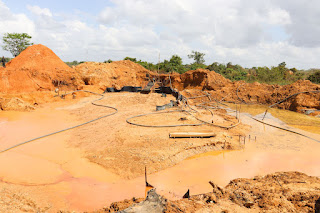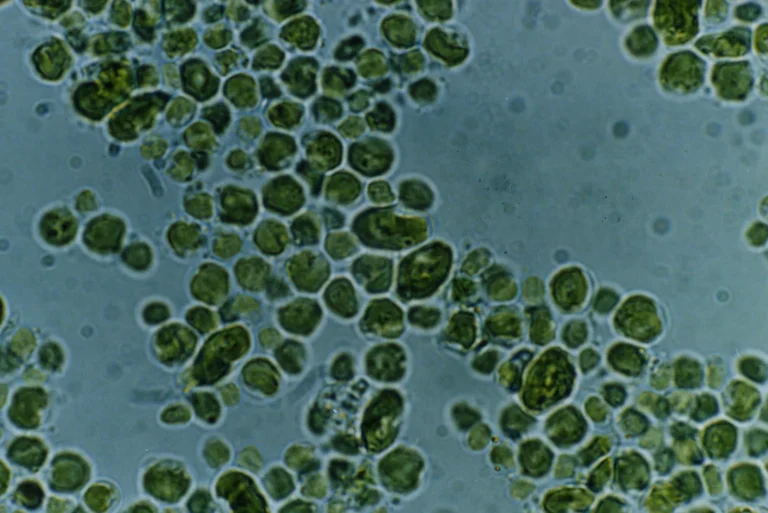5 Conservation Agriculture Practices Explained
Conservation agriculture practices are; no-till farming, cover cropping, mulching, biological control, and integrated crop-livestock management.
This article discusses conservation agriculture practices, as follows;
1). No-Till Farming (as one of the Conservation Agriculture Practices)
No-till farming or conservation tillage, is a practice of conservation agriculture, whereby crops (and livestock) are grown with minimal disturbance of the soil.
The goal of no-till farming is ultimately to achieve effective soil conservation [1].
This could be in the form of erosion mitigation, as no-till farming preserves the structural integrity and resilience of soil, so that the soil becomes resistant to the influence of agents of erosion.
Alternatively, it could be in the form of soil fertility enhancement.
No-till farming enhances soil fertility in many ways. One of these is by facilitating the build-up of organic matter or biomass, in soil. Such an effect increases soil organic carbon, and mitigates both climate change and acid rain-risk by improving carbon sequestration capacity of soil [6].
Chemical fertilizer usage can be reduced through no-till practice, because crop residue can serve as an alternative source of soil nutrients. This helps mitigate pollution and overall environmental impact of farming, which is an important objective of conservation agriculture.
2). Cover Cropping
Cover cropping is a practice of conservation agriculture, whose objectives and outcomes include protection and improvement of soil.
The planting of cover crops leads to both soil and water conservation [4].
It conserves soil resources by providing mechanical support and protecting from erosive forces, and allowing nutrients to accumulate without being leached.
Cover cropping conserves water resources by minimizing runoff, and reducing evaporation rates, while increasing soil organic content and moisture retention capacity.
One of the advantages of cover cropping in conservation agriculture is its versatility. Cover crops can be cultivated successfully in any geographic or climatic context, and can be combined with other practices like crop rotation and conservation tillage.
In addition to conserving soil and water resources, cover crops also suppress weed growth, while mitigating pest and diseases [3].
3). Mulching (as one of the Conservation Agriculture Practices)
Mulching is a conservation agricultural practice that is similar to cover cropping in terms of its outcomes.
Through mulching, soil moisture is conserved through the reduction of evaporation rates. When soil is covered by organic or inorganic mulch, moisture is retained by absorption, and prevented from escaping into the atmosphere.
This is beneficial to the atmosphere as well, because it reduces the rate at which water vapor and other greenhouse gases are released, thereby mitigating global warming and climate change [5].
Mulching is ideal to be practiced in semi-arid and arid regions, although it may also be used in humid zones and others that are not prone to any degree of desertification.

4). Biological Control
One of the pillars of conservation agriculture is biological control, which aims to utilize natural resources in a sustainable manner through effective recycling and replacement of synthetic materials and methods.
Biological control is a classic example of natural resource management in conservation agriculture.
Also called ‘Conservation Biological Control’ (CBC), it involves the replacement of chemical pesticides and herbicides with biological materials and methods that are economically and ecologically sustainable [2].
Biological control conserves all major resources in agriculture, including soil, water, and air quality; as well as financial resources. It achieves this by using natural enemies of pests, weeds and diseases to reduce the prevalence of these on the farm.
Cover cropping is a form of biological control in conservation agriculture, as the cover crops can be used to control weeds.
5). Integrated Crop-Livestock Management (as one of the Conservation Agriculture Practices)
Integrated Crop-Livestock Management (ICLM) is a practice of conservation agriculture that involves efforts to improve the ecologic resilience of agricultural systems by unifying the biological cycles governing both crop and livestock growth.
It involves various measures to align crop and livestock farming to the natural dynamics of ecological cycles; such as biodynamic farming, rotational grazing and organic farming.
Integrated crop-livestock has multiple benefits as a conservation agriculture practice, including increase in crop diversity, control of weeds, diseases and pests, and improvement of productivity.

Conclusion
Conservation agriculture practices are;
1. No-Till Farming
2. Cover Cropping
3. Mulching
4. Biological Control
5. Integrated Crop-Livestock Management
References
1). Derpsch, R. (2003). “Conservation Tillage, No-Tillage and Related Technologies.” Available at: https://doi.org/10.1007/978-94-017-1143-2_23. (Accessed 17 November 2022).
2). El-Wakeil, N.; Saleh, M.; Gaafar, N.; Elbehery, H. (2017). “Conservation Biological Control Practices.” In (Ed.), Biological Control of Pest and Vector Insects. IntechOpen. https://doi.org/10.5772/66312. (Accessed 14 November 2022).
3). Lemessa, F. (2015). “Cover Crops as a Means of Ecological Weed Management in Agroecosystems.” Journal of Crop Science and Biotechnology 18(2):133-145. Available at: https://doi.org/10.1007/s12892-014-0085-2. (Accessed 17 November 2022).
4). Nilahyane, A.; Ghimire, R.; Acharya, O.; Mesbah, A. O.; Marsalis, M. (2019). “Effect of Cover Crops on Soil Water Conservation and Crop Yield.” 2019 ASA-CSSA-SSSA International Annual Meeting, San Antonio, Texas. Available at: https://www.researchgate.net/publication/338608510_Effect_of_Cover_Crops_on_Soil_Water_Conservation_and_Crop_Yield. (Accessed 17 November 2022).
5). Tribouillois, H.; Constantin, E.; Justes, E. (2018). “Cover crops mitigate direct greenhouse gases balance but reduce drainage under climate change scenarios in temperate climate with dry summers.” Medicine, Environmental Science. Available at: https://www.semanticscholar.org/paper/Cover-crops-mitigate-direct-greenhouse-gases-but-in-Tribouillois-Constantin/bb06a5bf3718b0cf97c309c4ad19a079ca393689. (Accessed 17 November 2022).
6). Wang, H.; Wang, S.; Yu, Q.; Zhang, Y.; Wang, R.; Li, J.; Wang, X. (2020). “No tillage increases soil organic carbon storage and decreases carbon dioxide emission in the crop residue-returned farming system.” Journal of Environmental Management 261(4):110261. Available at: https://doi.org/10.1016/j.jenvman.2020.110261. (Accessed 17 November 2022).



